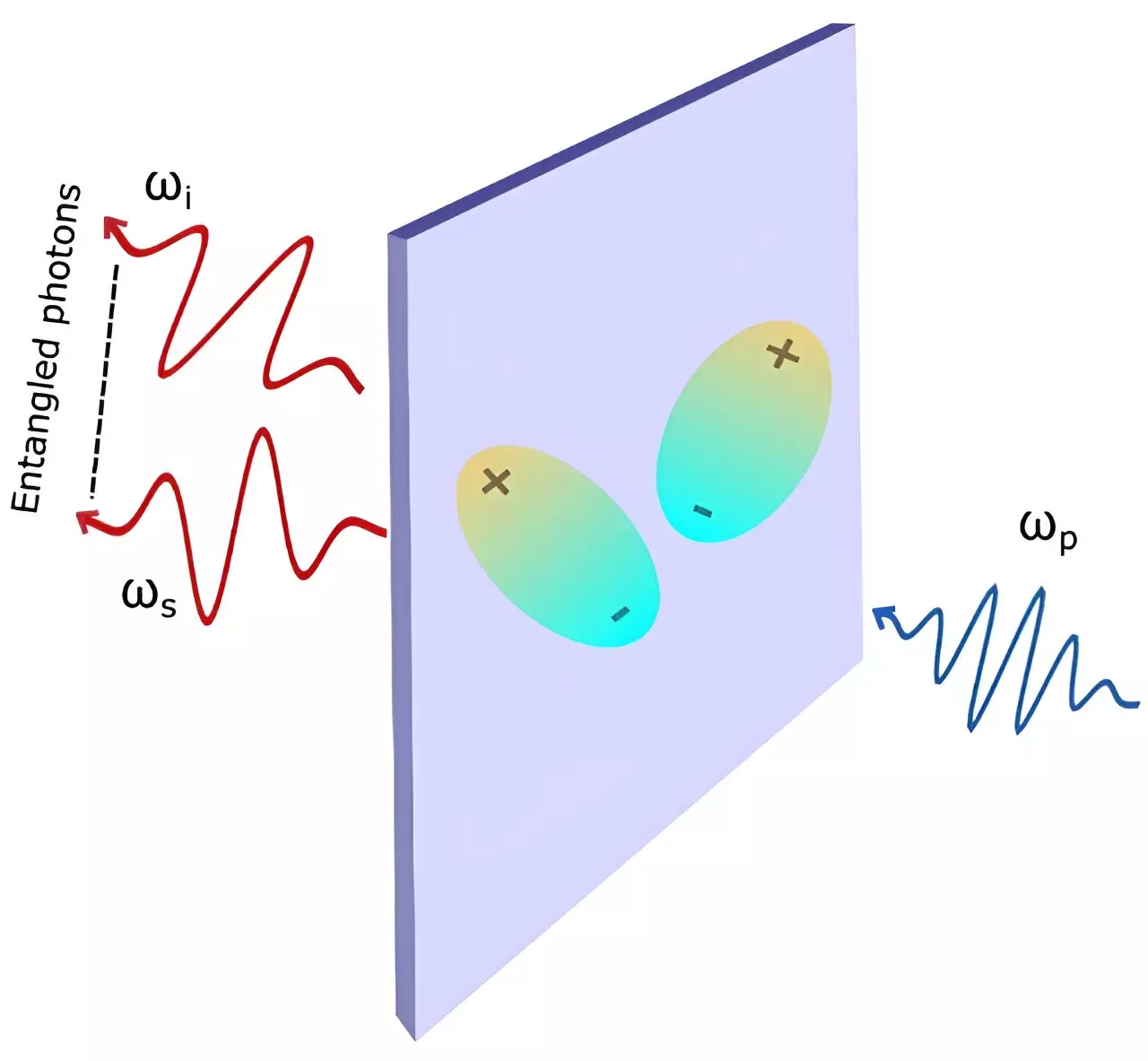Quantum entanglement is a fascinating phenomenon that underpins many advanced quantum technologies, from quantum computing to quantum cryptography. This phenomenon describes how pairs of quantum particles, such as photons, can become interconnected in such a way that the state of one instantly influences the state of the other, regardless of the distance that separates them. As our understanding of quantum mechanics advances, so too do the methods utilized to produce and harness these entangled photons, which are crucial for various applications in quantum information systems.
Traditionally, entangled photons are generated through a process known as spontaneous parametric down-conversion (SPDC). In this process, a beam of coherent light—often referred to as the “pump” beam—is directed onto non-linear optical crystals, resulting in the generation of entangled photon pairs. Unfortunately, SPDC is intrinsically inefficient, leading researchers to explore alternatives that may enhance the outcome. A significant breakthrough comes from the recent study conducted by scientists at the National University of Singapore (NUS) which demonstrates that by examining excitonic resonances, the efficiency of generating these photon pairs can be dramatically improved.
The researchers, led by Associate Professor Su Ying Quek, identified that excitonic interactions, which occur between positively and negatively charged particles created when light interacts with a crystal, could be leveraged to increase the efficiency of SPDC. These excitons emerge from the fundamental excitations within the crystal. By bringing these opposing charges closer together, the probability of successful transitions during the SPDC process increases, ultimately enhancing the overall yield of entangled photons. This nuanced understanding highlights the significance of many-body interactions in improving quantum processes.
One particularly surprising advantage discovered by the NUS team is the potential of utilizing ultrathin crystals. Previously, ultrathin materials were deemed unsuitable for SPDC due to concerns that their efficiency would decline with reduced material volume. However, the researchers demonstrated that the robust excitonic interactions characteristic of these materials can counteract this issue. This revelation opens up unprecedented avenues for producing entangled photons, as these ultrathin crystals can effectively eliminate long-standing technical difficulties, such as the phase matching problem often faced in SPDC processes.
To support their findings, the research team utilized fully quantum mechanical calculations, unpacking the complex non-linear optical responses of crystals subjected to incident light. Their application of the theoretical framework to NbOI2, a layered non-linear optical material, facilitated a deeper understanding of both SPDC and its reverse process, second harmonic generation (SHG). Remarkably, their computational simulations of SHG intensity correlated well with previously conducted experimental results, underscoring the reliability of their approach. Furthermore, they found that the entanglement efficiency can be magnified when the pump beam frequency aligns closely with an excitatory frequency inherent in the crystal.
These groundbreaking discoveries have far-reaching implications. The prospect of using ultrathin materials for producing entangled photons provides a pathway toward their integration into hybrid quantum-photonic systems, paving the way for next-generation quantum devices. By improving the efficiency of entangled photon generation, this research not only enhances our fundamental understanding of quantum mechanics but could also catalyze advancements in quantum computing, secure communications, and beyond.
The study conducted by NUS researchers showcases the importance of excitonic interactions in boosting SPDC efficiency and suggests that the future of quantum photonics may lie in utilizing ultrathin materials. This work illustrates a significant leap towards unlocking the full potential of entangled photons in various applications, making it a pivotal point in the ongoing quest to understand and exploit the complexities of quantum mechanics.


Leave a Reply